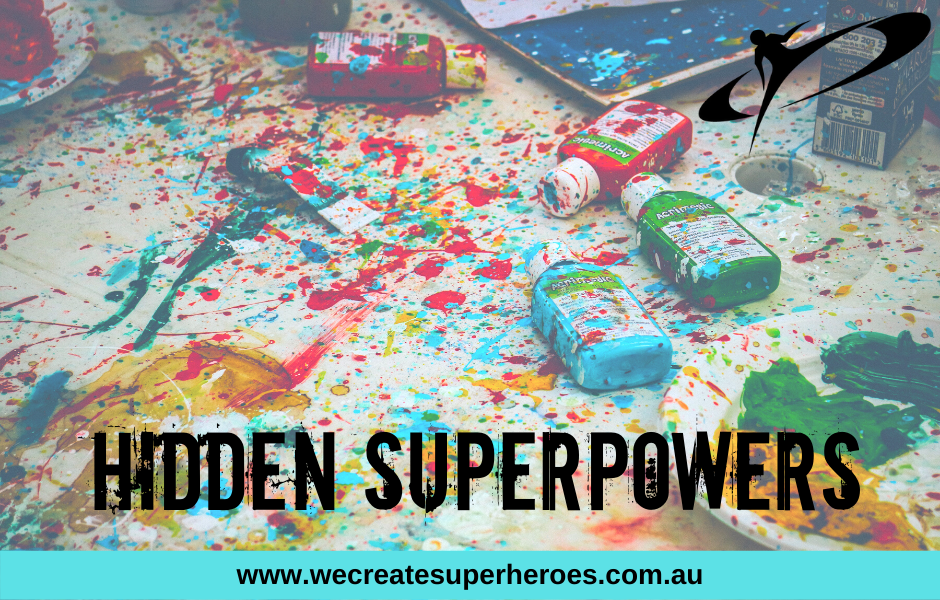One of the skills every superhero needs to learn is to how to discover their Superpowers. All of us have superpowers, and teaching kids how to recognise their superpowers, and how to take action to use them to help others is how we create superheroes. Often this is not about teaching skills, but about recognising strengths. We do this by teaching kids to look within themselves to find the superhero they already have inside them.
Some of these superpowers are obvious, like kindness and friendliness, courage and confidence, behaviours and actions that bring out our best to help others – our definition of what makes a superhero.
Hiding in plain sight!
Sometimes though, our superpowers are hidden. Sometimes they are superbly well-hidden as flaws and challenges, and may not be recognisable for their superpower potential. Kids are often labelled with traits and behaviours (and sometimes clinical diagnoses), that may result in them adopting the characteristics that go with that label or stereotype. This may also make it difficult for others to see through the label to the underlying superpowers. Classic examples include the child who is labelled as talkative in class, the child who is seen as attention seeking, or the one who can’t sit still or pay attention.
Strengths in our challenges
When we look more closely, it is not hard to find the strengths in these challenges. Talkative children are highly social and often become great leaders. Children who are attention seeking and dramatic often have fabulous imaginations and are potential creative geniuses. And the kinaesthetic kids who can’t sit still often get more work done than anyone else, because they can multitask, move fast, and use their energy to ‘hyperfocus’. (This can be a classic ADHD strength!). It can help them boost productivity to get the job done, when they discover how to direct it.
Recognising that we all have challenges, weaknesses or flaws, and that it is okay to have them, and that if we look hard we can find the strengths within them, is an important component to superhero training.
The list of hidden superpowers that can be masked as flaws is endless: someone who may seem disorganised and chaotic is often very creative. Someone who appears shy may actually be observant, thoughtful and reflective. Someone who seems weak and submissive may be humble and gracious. Arrogance and aggression may be misguided assertiveness, confidence, and natural leadership. All of these characteristics that can be shaped into “superness”, rather than criticised and suppressed.
As we have talked about in previous articles, our experiences are often just a matter of perspective. Having flaws or traits we might see as weaknesses don’t make us any less a superhero; they just make us human.
